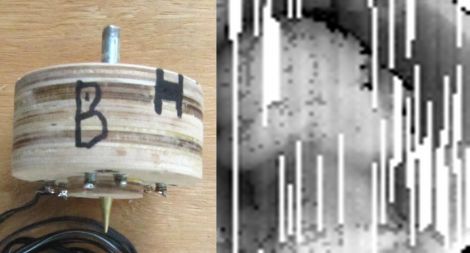
[Gary] sent a few pictures of his latest project our way via Flickr, which we thought a few of you CNC owners might be interested in. He has been working with his CNC machine a lot lately and decided it was about time he built a touch probe for his rig.
His initial goal was to use the touch probe to ensure his CNC table was perfectly level, but we’re thinking it will be helpful for a lot of different projects in the future. [Gary] says he was really looking to put together a proof of concept device, but that things worked out so well he had to share.
His probe seems to work very well, even without the fit and finish of others we’ve seen in the past. The body of the probe itself was built using several layers of quarter inch plywood, housing three sets of two screws. The screws are wired together in order to form a closed circuit when the brass probe is inserted. When the probe makes contact with a solid object, the circuit is broken, and the coordinates of the probe’s head are recorded.
Though [Gary] admits that he was not super careful when it came to building the probe, we think the results speak for themselves. For a first iteration its scanning abilities are pretty impressive – we can’t wait to see version 2.
















“His probe seems to work very well.” E.G., the picture on the right is a scan of a U.S. quarter.
Thanks, I’ve been thinking of building one too. I hadn’t seen the idea of using screw heads rather than ball bearings before – I like that. Maybe using stainless steel screws, rather than regular steel or galvenized screws, and using stainless rods, rather than brass, for the three rods would be a simple upgrade that would solve your intermittent re-contact problem?
Thanks for the comments. I enjoyed building the probe and am looking forward to doing a little better in the future.
bdsmith I do not thing the material is much of an issue here. It is more along the line that the three brass rods are not exactly perpendicular to the probe. Sometimes the probe rises up off the screws (or one pair of screws) and does not settle back down in exactly the same spot and since the angle is a little off the rod is a little higher or lower than it was before and does not make contact. I hope to give it another try soon and I have a few ideas about how to do better.